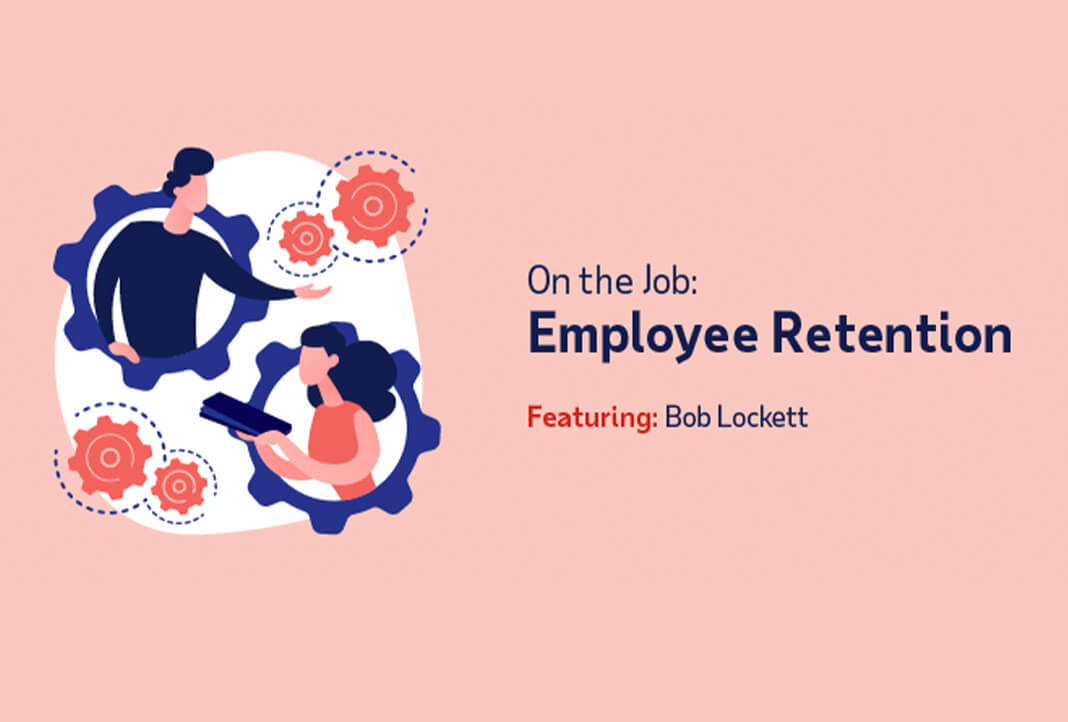by Spark Team
In this “On the Job” segment, Bob Lockett, Chief Diversity and Talent Officer at ADP, chats with Cheddar News about employee retention in today’s competitive job market.
Over the past couple of years, the labor market has been in a period described by many as the “Great Resignation.” Organizations must adapt to meet their employees needs or risk losing top talent.
A study done by ADP Research Institute® shows seven in every 10 workers have contemplated a major career pivot this year, and that corporate ethics and values have become integral to retaining talent.
Above: Speaking with Cheddar News, Bob Lockett (BL), says employers must consider the entire “talent ecosystem” when it comes down to employee retention.
Q: How important is flexible work it when it comes to retention with those employees?
BL: Flexibility is one of those things that is important to everyone from a work standpoint. And remember, one size doesn’t fit all. Now there are some companies that are back to work five days a week, and that might work for them in their industry, while others are going to have fully remote work. If that’s the case, keep in mind that there are pros and cons to each approach. And at the end of the day, what people want is flexibility so they can have work/life integration versus work and life balance – I think that’s an important spin on the work/life balance issue from times gone by.
Right now, this is a candidate driven market, and companies will miss out on talent if they don’t offer some level of flexibility. And besides just being flexible, it also shows that you care about your people holistically, so they can participate in experiences that matter for them. And finally, in the research conducted by the ADP Research Institute® about seven out of 10 people who responded to that survey said that if they didn’t get some level of flexibility, and if their company required them to come back into the office full time, they would say, “I’m going to start looking for a job.” So that’s an important thing to keep in mind.
Q: Inflation and the rising cost of living is top-of-mind, so how can employers approach compensation to improve employee retention?
BL: Well, paying people the right amount of money is kind of table stakes for any retention effort. And you can’t really attract people either if you don’t pay them right. So, wages are up, and that’s due to some basic economic principles. It’s supply and demand; there’s greater demand for talent and lower supply, so of course wages are going to go up. But while compensation is one of the most important factors, it’s not the only factor that will keep people. In fact, research shows that people will give up parts of their compensation if they can have greater flexibility. In other words, compensation plus flexibility could lead to greater retention.
Q: Opportunities for growth and development within an organization fuel employee retention as well. How can employers make those opportunities available for their workers?
BL: Of course, people want to learn new skills, they want to advance in their careers, and they want to contribute to their organization’s success. We conducted an internal study related to this, and our people told us that they want time to develop new skills and an opportunity to gain new experiences. So now we give people time to improve their skills; we give them time to have those different experiences. We hope this will build loyalty. Our people will stay and say, “Look, this is another reason why I enjoy working in this organization.”
Q: Diversity, equity, and inclusion (DE&I) plays a big role in workplace culture. How can DE&I play a role in employee retention efforts and result in employee loyalty?
BL: Of course, people want to work at a values-driven organization, and DE&I has to be one of those values. At ADP, one of our values is each person counts, which speaks directly to diversity, equity and inclusion. People want to know that their employer has a strategy around DE&I and plans to make the business world a more equitable place. You can measure things like diversity. You can look at demographic data. You can measure equity because you can look at the pay gaps and pay equity and promotional equity as well. But we’ve also developed a tool to measure your sentiment in terms of, how do you feel about being seen, valued and heard in your organization? When people feel that they can be their true authentic selves at a company, and the employee demographics reflect the community in which they operate, and the clients that they serve, employees are more likely to stay.
Q: What’s the one thing employers can do to attract and more importantly, retain today’s talent?
BL: I wish there was only one thing, but unfortunately there is no silver bullet to attract and retain talent. Rather, we must look at the talent ecosystem and we should pay people the right way, provide them the right opportunities to learn and grow, have some degree of flexibility depending on what the business is, and finally, ensure that they feel connected to the organization and that they can be seen, valued and heard for all that they are.
By focusing on the talent ecosystem, companies then can pull multiple levers to say, “Here’s how we’re going to leverage this tool to attract and retain talent as needed.”
One final thought. It’s really important that leaders pay attention to their people; to frequently check in to see how they’re doing. By paying attention to your people, you’ll hopefully avoid the need to conduct that dreaded stay interview which is often very ineffective. Checking in with them, paying attention to them, giving them the opportunity to have some level of flexibility and career growth opportunities … all helps lead to greater retention of your associates.
Learn More
In the post-pandemic world of work, the organizations that prioritize people first will rise to the top. Find out how to make HR more personalized to adapt to today’s changing talent landscape. Get our guide: Work is personal

This article originally appeared on SPARK powered by ADP.



